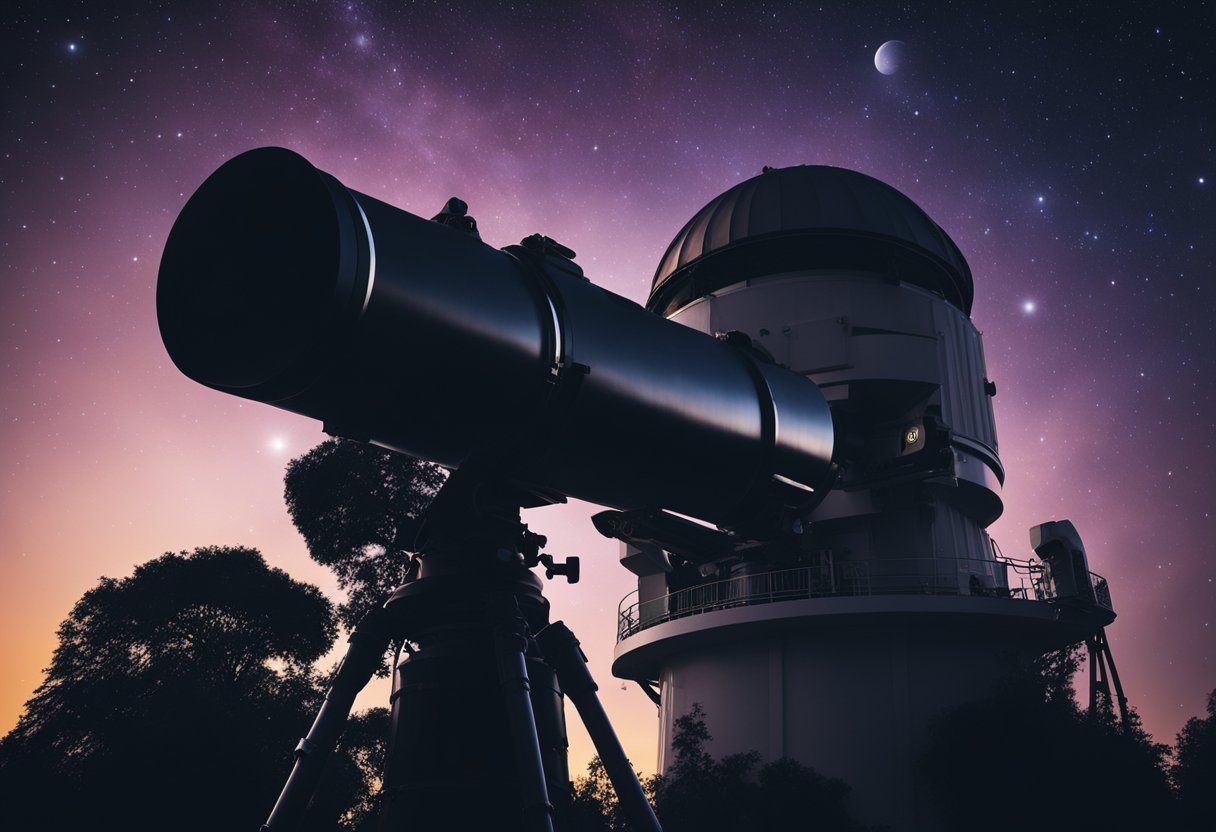
Exploring the vastness of space, we encounter numerous exoplanets orbiting stars far beyond our solar system. With advanced technology, these distant worlds that were once mere points of light are becoming increasingly visible, offering us a glimpse into potential Earth-like planets and diverse celestial phenomena. The quest for observing these distant exoplanets has captured the imagination of astronomers and stargazers alike, presenting an ever-evolving tableau of our universe’s complexities.
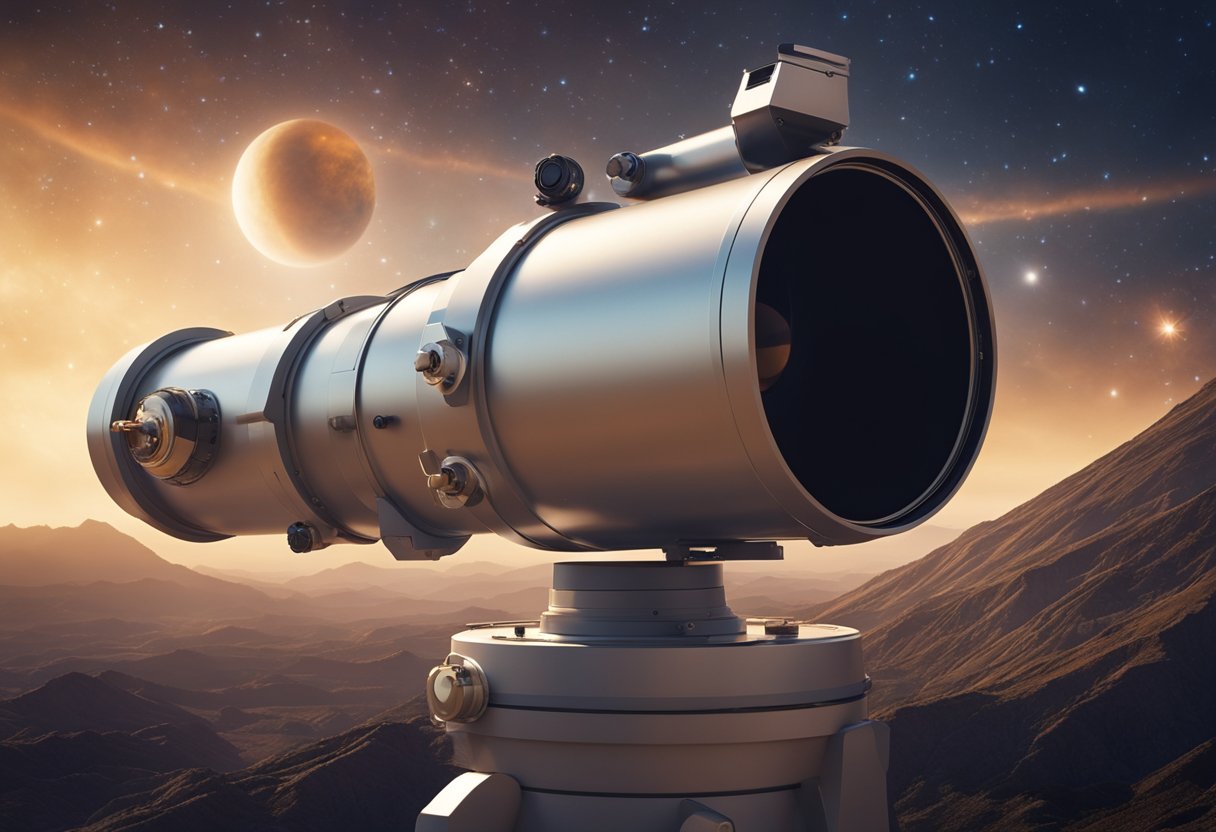
Beyond mere observation, the study of exoplanets allows us to delve into planetary systems dynamics, understand exoplanet demographics, and even categorise these foreign worlds. As techniques evolve from studying star light dimming during planetary transits to characterising atmospheric compositions, we gather critical insights into exoplanetary science. Telescopic advancements and interstellar research resources extend our reach, enabling collaboration and fuelling the anticipation of future exoplanet discoveries.
In our exploration of the cosmos, the quest to spot exoplanets has evolved significantly from ancient interpretations to contemporary scientific methods.
The ancient Greek philosophers hypothesised about the existence of other worlds, but without technological means, these ideas remained philosophical musings rather than empirical observations. They peered at the stars, wondering if other Earth-like planets existed, but these suspicions lingered unproven for millennia.
The march of time brought great advancements. The Middle Ages did not see much progress in the field of astronomy due to socio-political reasons, though some preserved knowledge that would later influence the Renaissance. It was in the Renaissance that celestial observations transformed with the advent of the telescope, leading to the methodology that would eventually allow us to identify planets beyond our solar system.
Let us take the example of 51 Pegasi b, the first exoplanet confirmed to orbit a sun-like star, which was a pivotal discovery made in 1995. That momentous event, heralded a new era in exoplanet astronomy, marked the beginning of a cascade of discoveries that astronomers made using techniques developed throughout history.
To imagine witnessing these celestial bodies with our own eyes seemed like a fantasy. Today, we contemplate the next step in our space journey – space tourism – with ventures provided by websites such as SpaceVoyageVentures.com, which documents our progress towards making a visit to these distant worlds a reality.
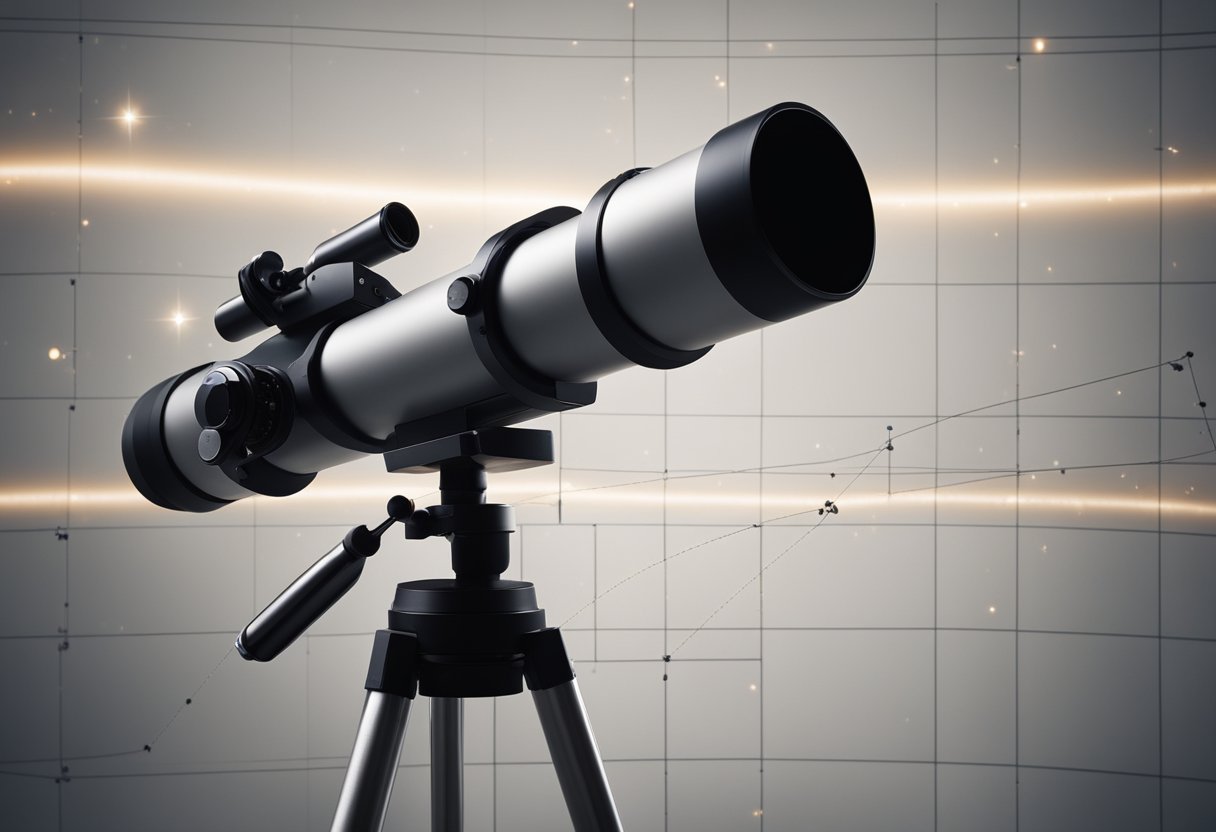
Our quest to uncover planets beyond our Solar System employs a variety of sophisticated techniques, each harnessing unique principles of physics and astronomy to detect distant worlds.
The Radial Velocity method, also termed the Doppler technique, traces the subtle wobble in a star’s position caused by the gravitational tug of orbiting exoplanets. We determine the planet’s mass and orbit by observing the Doppler shifts in the star’s spectrum. This was the technique that led to the discovery of 51 Pegasi b, the first exoplanet around a sun-like star.
In Transit Photometry, we monitor stars for periodic dimming, indicating that an exoplanet has transited—or passed in front of—the star. By analysing the light curve, we extract crucial details like the planet’s size and orbital period. The amount of starlight transitting through a planet’s atmosphere can even hint at atmospheric composition.
Under Direct Imaging, we aim to capture visual evidence of exoplanets using high-contrast imaging techniques. This often involves coronagraphs to block out the star’s overwhelming glare, allowing less luminous objects like planets to be seen. The process is challenging but rewarding when direct snapshots of exoplanets are achieved.
Microlensing occurs when the gravitational field of a star and its orbiting planet acts as a lens, magnifying the light from a distant background star. We study the brightening effect to infer the presence of an exoplanet. This technique is especially sensitive to planets at large distances from their host stars.
Lastly, Astrometry, the oldest form of stellar observation, tracks minute changes in a star’s position in the sky due to an orbiting planet. The precision required for this method is demanding, but astrometry can provide the most comprehensive orbit information for exoplanets.
As we explore the cosmos, telescopes and observatories serve as our eyes, unveiling the wonders beyond our celestial neighbourhood. These instruments—both on the ground and in the vast expanse of space—are critical for our pursuit of understanding exoplanets.
The Hubble Space Telescope has been pivotal in capturing the beauty and complexity of the universe since its launch in 1990. Utilising its Wide Field Camera 3 and other instruments, Hubble has provided invaluable data on the atmospheres of exoplanets.
The James Webb Space Telescope (JWST), much anticipated for its advanced capabilities, is set to continue this legacy. Its mission includes observing exoplanets in wavelengths never seen before. The JWST’s ability to observe exoplanets in great detail will significantly enhance our understanding of their atmospheres.
Other space telescopes like the Spitzer Space Telescope have played a key role in the study of exoplanets, despite their missions concluding. Likewise, the Kepler mission and its successor, the Transiting Exoplanet Survey Satellite (TESS), have expanded our exoplanet catalogue by thousands.
European missions are also significant contributors, with the Gaia mission mapping the stars of the Milky Way, and the CNES-led Convection, Rotation and Planetary Transits mission (CoRoT) being one of the pioneers in exoplanet discovery.
Upcoming European Space Agency missions such as CHEOPS, PLATO, and ARIEL will focus on exoplanet characterisation and make crucial measurements related to the formation and evolution of planetary systems.
Our ground-based observatories complement the data gathered by space telescopes. These include advanced facilities equipped with high-resolution spectrometers and adaptive optics systems.
Some notable ground observatories that contribute to exoplanet studies include ESO’s Very Large Telescope (VLT) in Chile and the future Extremely Large Telescope (ELT), which will be the world’s largest optical/near-infrared telescope once operational.
These ground-based systems allow us to study phenomena such as stellar wobbles induced by orbiting exoplanets, helping us infer their mass and orbital characteristics, essential information that, when combined with space-based data, provides a more complete picture of these distant worlds.
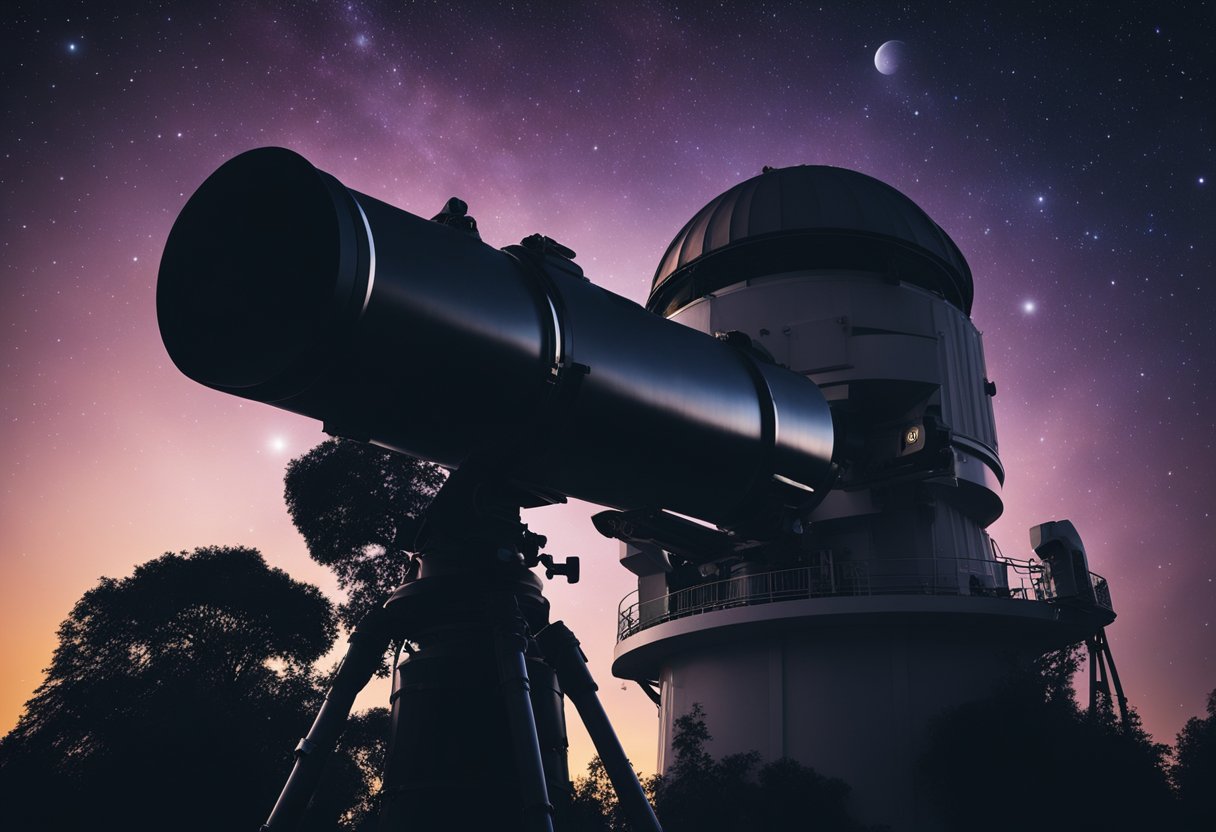
In our examination of exoplanet atmospheres, we utilise specific techniques to discern the composition and characteristics of these distant worlds. Through the measurement of light across various wavelengths, we gain insights into the molecules present in these alien skies.
Transmission spectroscopy is a powerful method we employ to investigate the atmospheres of exoplanets. When an exoplanet transits or passes in front of its star, starlight filters through the planet’s atmosphere. We analyse the absorption of different wavelengths; each molecule absorbs a unique set of wavelengths, leaving behind a spectral fingerprint. For instance, NASA’s James Webb Space Telescope provided the most detailed analysis of an exoplanet using transmission spectroscopy on WASP-39 b.
| Molecule | Typical Absorbed Wavelengths |
|---|---|
| Water (H2O) | Visible and Infrared wavelengths |
| Carbon Dioxide (CO2) | Mid-infrared wavelengths |
| Methane (CH4) | Infrared wavelengths |
By scrutinising the absence of specific wavelengths, we ascertain the molecular composition of the exoplanet’s atmosphere. This technique is also beneficial for detecting potential biosignatures, as certain life processes produce unique atmospheric compounds.
In contrast, reflection spectroscopy involves analysing the light that is reflected off the surface and atmosphere of an exoplanet. We can infer the makeup of the atmosphere and surface by assessing which wavelengths are reflected and which are absorbed. Typically, this technique requires more light than transmission spectroscopy and can be more challenging to perform due to the faintness of the reflected light.
| Atmosphere Property | Detected Through Reflective Wavelengths |
|---|---|
| Cloud cover | Broad range of reflective properties |
| Surface composition | Specific wavelengths linked to materials |
This method is particularly useful for studying exoplanets that do not transit their stars or for providing complementary information to transmission spectroscopy. By combining observations, we gain a more comprehensive view of an exoplanet’s atmospheric conditions.
When we categorise exoplanets, we classify them based on their composition, size, and other physical characteristics that are analogous to bodies found within our own Solar System. This allows us to understand these distant worlds better, from gas giants like Jupiter to rocky terrestrial planets.
Jupiter: The archetype of gas giants, Jupiter-like exoplanets are immense in size, primarily composed of hydrogen and helium. These exoplanets don’t have a well-defined solid surface and often have complex atmospheric systems with multiple layers. It’s common for these giants to possess strong magnetic fields and a system of rings and moons.
Rocky Planets: Comparable to Earth, terrestrial exoplanets have solid surfaces and are mainly composed of silicate rocks or metals. Within this category, we find planets that range from Earth-sized to larger super-Earths. These planets can be extraordinarily diverse, depending on factors like distance to their parent star and geological history.
Neptune: Reminiscent of the ice giants such as Neptune, this class of exoplanets is composed primarily of substances with high molecular weights, like water, ammonia, or methane, possibly enveloped by hydrogen and helium. Unlike their gas giant cousins, they have a larger proportion of ice and rock in their composition.
Brown Dwarf: While not strictly planets, brown dwarfs occupy the mass range between the heaviest gas giants and the lightest stars, making them critical to our understanding of substellar objects. Observations of brown dwarfs help us refine the distinctions between planets and stars and understand the full range of celestial entities.
In exploring the dynamics of planetary systems, we focus on how gravitational forces and the physical properties of planets and stars govern the stability and visibility of exoplanets.
Orbital patterns within planetary systems are dictated by the gravitational pull of their host stars and the masses of the planets themselves. The regularity of these orbits is key to predicting the positions of planets at any given time, which is crucial for observing exoplanets from Earth. Planetary systems with larger planets tend to have more detectable gravitational effects on their star, leading to variations in brightness that can signal a planet’s presence.
The interactions between a planet and its host star can significantly influence the planet’s visibility to us. The brightness of the star and the planet’s proximity to it can cause the planet to be lost in the star’s glare or, conversely, provide a contrast that makes the planet more visible.
By understanding these dynamics, we at SpaceVoyageVentures.com gain insight into the potential observation of exoplanets, contributing to the mapping of celestial bodies that future space tourists might yearn to witness.
In our exploration of exoplanets, we’ve categorised them based on various criteria to understand their properties and prevalence across the galaxy.
NASA plays a pivotal role in documenting exoplanets. Their catalogues serve as a comprehensive repository of discovered exoplanets. The Kepler mission’s contributions to these catalogues are significant, with thousands of planets identified by the Kepler Space Telescope. Researchers and observatories around the globe rely on this data to conduct further studies and advance our understanding of planetary systems beyond our own.
Our research delves into the distributions and characteristics of exoplanets. Population studies illuminate how these planets are spread across different star systems and the galaxy. These studies draw from meticulous analyses of data from various detection methods, with a major focus on observations from Kepler and other observatories. These insights are crucial in forming the ground truth against which planet formation and evolution theories are tested and refined.
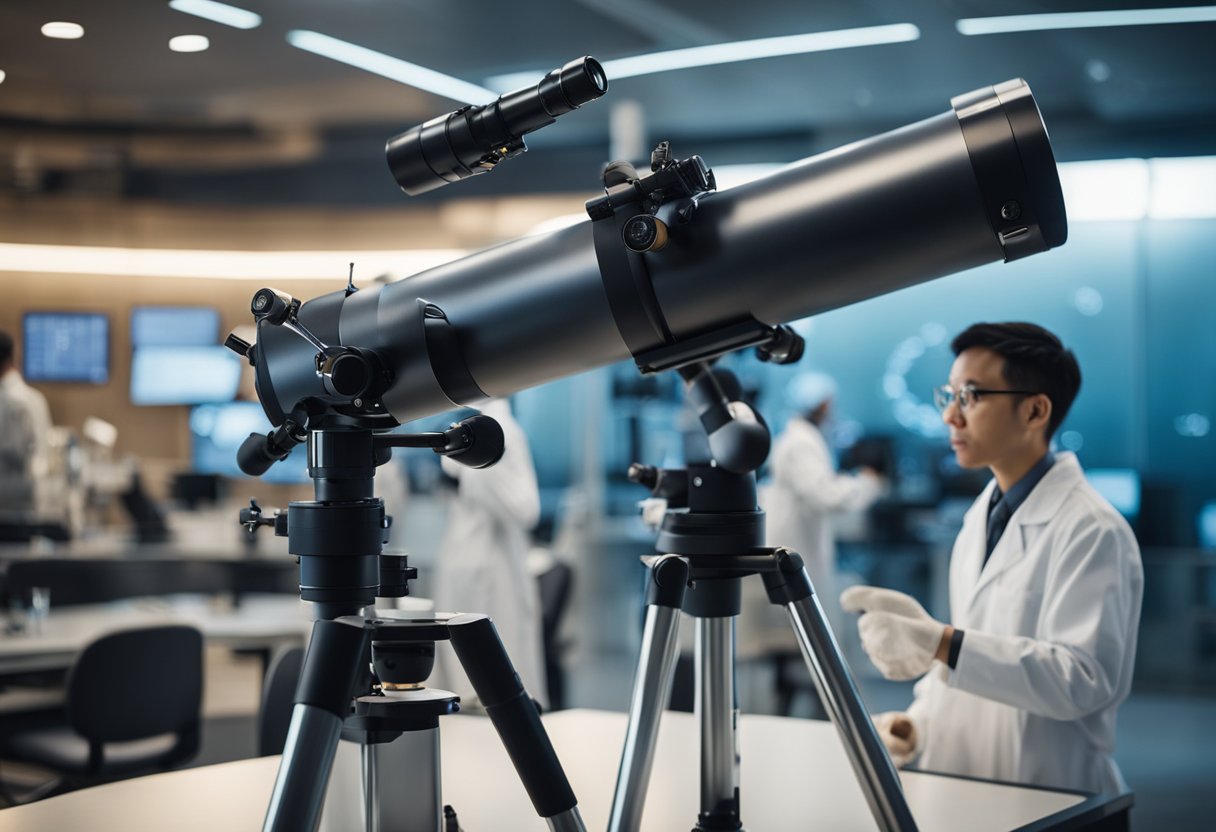
In the evolving field of exoplanetary science, we focus our expertise on innovative observational techniques and rigorous data analysis methods to comprehend the universe beyond our solar system.
Direct Imaging: One of the key methods we employ is direct imaging, where telescopes capture the visual likeness of exoplanets by minimising the overwhelming glare of their parent stars. This technique often requires advanced instruments and is more effective for planets that are far from their stars, or those large enough to reflect significant amounts of light.
Transit Method: We also utilise the transit method to detect transiting exoplanets as they pass in front of their stars, causing a slight dip in the brightness observable from Earth. This approach is particularly useful in determining an exoplanet’s size and orbit.
Radial Velocity: Another frequent approach is measuring the wobbles in a star’s position caused by the gravitational pull of an orbiting planet. Analysing shifts in the star’s spectrum allows us to infer the planet’s mass and the shape of its orbit.
Observing timing can be crucial, and we often schedule our observations in UTC to coordinate efforts globally.
Photometric data analysis: When a target exoplanet passes in front of or behind its star, it causes measurable changes in brightness. Our astronomers meticulously analyse these light curves to discern the characteristics of the planet’s atmosphere and surface.
Performing data analysis requires precision and an objective observer outlook to ensure that our interpretations align with the evidence collected.
We often share our findings in real-time with the astronomical community for a comprehensive and detailed understanding of the cosmos. And as we peer into the depths of space, there’s a burgeoning interest in the broader public for not just observing but experiencing these distant worlds firsthand. Websites such as SpaceVoyageVentures.com feed this curiosity, exploring the burgeoning industry of space tourism alongside scientific discovery.

In this section, we discuss pivotal resources offering public access to exoplanet research and the vibrant community initiatives fostering collaboration among astrophysicists and planetary scientists.
Astrophysics Source Code Library: A comprehensive repository housing source codes pertinent to astrophysics research, it remains instrumental for astrophysicists seeking peer-reviewed software entries. Our reliance on this library enables transparent access to innumerable tools contributing to the discoverability and citability of vital research software.
Exoplanet Modelling and Analysis Centre (EMAC): Operating from the Goddard Space Flight Centre, this centre bolsters collaborative work by providing downloadable software and hosting virtual astronomy software talks to enhance the integration and application of exoplanet research resources within and beyond the astrophysical community.
Astrophysics Data System (ADS): Through ADS, we gain access to an extensive database of scholarly publications, playing a critical role in keeping us abreast of ongoing research developments and emerging collaborative opportunities.
Virtual Astronomy Software Talks (ExoVAST): These sessions encourage knowledge sharing among experts, driving forward the discourse on software resources. Our engagement in these talks promotes open dialogue and enriches the collective expertise within the exoplanet and planetary science community.
Exploring the depths of space, we have encountered a diversity of exoplanets, each with its unique set of characteristics. From the composition of their surfaces to the dynamics of their atmospheres, the study of exoplanets helps us understand the potential for varied forms of planets in the universe.
The surfaces of exoplanets vary enormously, with some harbouring rocky terrain similar to Earth and Mars, while others could be enveloped in deep oceans or composed of gas. We’ve identified planets such as 51 Pegasi b, known as hot Jupiters, with no solid surface but rather thick layers of clouds and possibly volatile weather patterns.
Atmospheric analysis provides crucial insights into the nature of exoplanets. In studying their atmospheres, we’ve detected a range of gases, from water vapour to methane, indicating a vast array of potential environments. Technological advancements, such as those anticipated with the launch of NASA’s James Webb Space Telescope, will provide us a more detailed view of exoplanetary atmospheres than ever before.
In the pursuit of understanding distant worlds beyond our own, the field of exoplanet research stands on the cusp of dramatic advancements. We are looking forward not only to new discoveries but also to the technologies and missions that will enable them.
The introduction of the James Webb Space Telescope (JWST) marks a significant leap in our capability to study exoplanets. With its unparalleled infrared sensitivity, JWST is expected to examine the atmospheres of exoplanets with greater precision than ever before, enabling us to identify components like water vapour, methane, and possibly even signs of biological activity.
Moreover, advancements in coronagraphy, the technique used to block out a star’s light to reveal the existence of orbiting exoplanets, are poised to drastically improve our detection capabilities. This technique will be refined with the upcoming space-based observatories, enhancing our ability to discern faint planets nestled close to their host stars.
Looking beyond the JWST, a suite of prospective missions is poised to take our exploration of planetary systems to new heights. The European Space Agency (ESA) has outlined a vivid future poised with the potential for entire new areas of research as we transition from detecting to characterising exoplanets.
Additionally, NASA is also at the forefront, preparing the Nancy Grace Roman Space Telescope, which is slated to incorporate next-gen exoplanet-imaging technology. This mission is expected to further advance our understanding by testing new technologies that could greatly multiply the number of detectable exoplanets and might bring us closer than ever to finding evidence of extraterrestrial life.
These investments in technology and dedicated missions ensure that we continue to expand our knowledge and, perhaps one day, may align with endeavours in space tourism like those profiled on SpaceVoyageVentures.com, bridging the gap between scientific exploration and public experience.
In this section, we address commonly posed inquiries regarding the observation, tracking, and study of exoplanets from Earth.
Observing exoplanets directly through a telescope from Earth is quite challenging due to their vast distances and the blinding light of their host stars. However, amateur astronomers can detect them indirectly by noting the dimming of a star when a planet transits in front of it, a method known as transit photometry.
For mapping and observing exoplanets, applications such as NASA’s Eyes on Exoplanets provide a user-friendly interface for enthusiasts to visualise the locations of known exoplanets in relation to the Earth, making it simpler to comprehend their positions in the cosmos.
NASA primarily utilises the transit method, where telescopes like Kepler and TESS monitor stars for periodic dips in brightness, suggesting an orbiting planet. Less frequently, other techniques such as radial velocity and direct imaging are employed to discover and catalogue new exoplanets.
Several notable exoplanets have been discovered, such as 51 Pegasi b, known as the first exoplanet orbiting a Sun-like star, and Kepler-22b, which resides within the habitable zone of its star and may have conditions suitable for liquid water.
The greatest known distance at which an exoplanet has been detected is approximately 27,700 light years away in the Milky Way’s bulge, observed by the microlensing technique.
It’s challenging to detect exoplanets due to their relatively small size and dim light next to their luminous host stars. Techniques such as the transit method improve visibility by focusing on the star’s reduced brightness when an exoplanet passes in front, while improved telescope optics and space-based observation platforms are constantly enhancing our ability to observe these distant worlds.